Last semester I used my blog as a platform to think through a project I was working on entitled Five Evangelical Christs. It was a six part series which allowed me to think through ideas that turned into a more developed paper. I really enjoyed the process and got some great feedback, though more of that feedback was written on Facebook than showed up directly on this blog.
I think I will do something this semester in connection with my Philosophical Aesthetics class. I’ve decided that my big paper will be a systematic look at the concepts of the Beautiful and the Sublime. But, as I’ve been thinking this through, I believe I need to include two additional concepts: the Pretty and the Ugly.
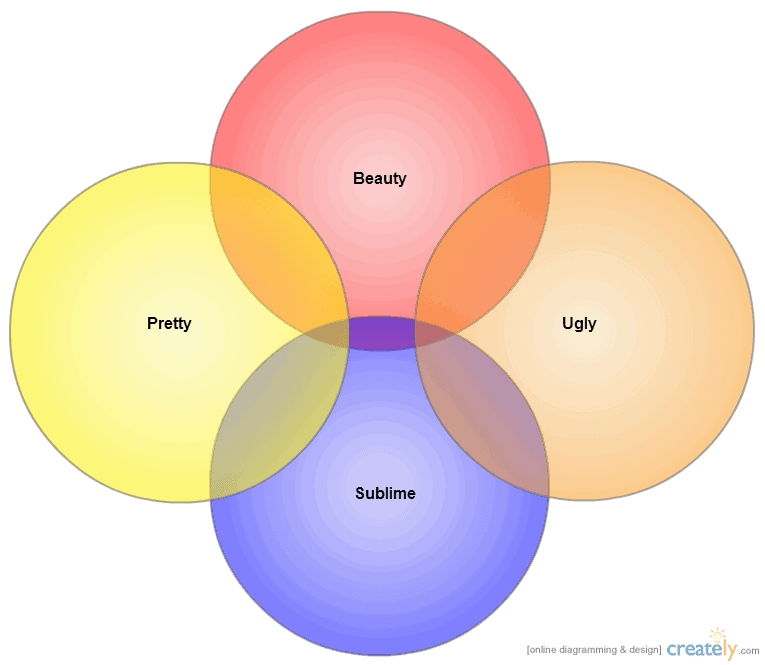
Beauty and Sublime both have a long history. Typically, they are set in opposition to each other. I, on the other hand, have a slightly different conception. The basis of my idea isn’t without historical precedent, but that is for another blog post…maybe. My conception has overlapping areas as illustrated with the above Venn diagram. In some ways the diagram is misleading. For example, I don’t believe that the majority of beauty is free of the pretty, sublime, and ugly. But, this is the best way I have, so far, been able to visualize my concept. Please feel free to make suggestions on this.
My idea for this first blog is to ask people to give feedback on what each of these four terms mean to them. Some of you have philosophical or artistic training some of you do not. I want to hear it all! I will start the ball rolling by giving some of my intuitive thoughts on each of these categories and how they relate. There are going to be problems with how I articulate these and maybe even contradictions. Please point those out. You are my internet think tank. Challenge my thinking and posit your own conceptions. This project grows out of my dissatisfaction with how philosophers have historically conceived of these concepts. So, if I can disagree with the likes of Kant, Hegel, Burke, etc., you can certainly disagree with me!
So here goes…please remember that these thoughts are all a work in progress and I look forward to reading your thoughts.
Beauty
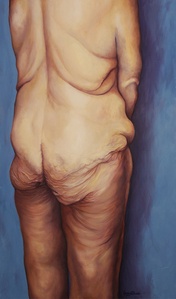
Historically beauty and aesthetics go hand in hand. The question of beauty is the primary question of aesthetics. In some streams of thought, beauty is considered a transcendental with concepts such as the good and the true. Since I hold to a theistic conception of the universe this resonates as true to me. However, I struggle to just accept this as a matter of fact. Plato’s form theory from where this idea originates is largely problematic to me but at the same time I do also think that natural theology can be used to ascertain elements of the character of God. If creation is reflective of the creator in the same way that a painting is reflective of the painter I believe it is reasonable to deduce that the creator has an interest in beauty, even that it is reflective of the creator’s character. For me, this allows some access to the idea of beauty as a transcendental and at least loosely ties beauty to goodness and truth. For a non-theist this is not at all convincing. Still, I think that beauty implies not only a level of physical attraction but also something deeper. Maybe that deeper thing is character or a moral quality. I think it may vary some. In part, this is important to me as a distinction between pretty and beauty. I think that ‘beautiful’ implies something more than prettiness. Also, I think that something ugly can also be beautiful. I have thought about this painting by Jordan Wade a lot in regard to this issue. The painting is, I think, both undeniably beautiful and ugly. I might even argue that there is an element of sublime in this painting (more on that later). But, this painting is not pretty. There is great difficulty in articulating the depth to which I am referring that I find to be an essential element of beauty.
Pretty

When I think of pretty art I automatically think of Thomas Kinkade. In some ways this Disney Snow White painting by Kinkade perfectly illustrates the point. This is a pretty picture but I would never call it beautiful. Some of that is tied into the philosophical deficiencies that I see in Kinkade’s work but that isn’t all of it. Disney also illustrates the difference well. In Snow White one could argue that the difference between Snow White and the Queen is the difference in pretty and beautiful. The pleasure that the queen’s appearance brought the viewer was entirely physical and superficial. While Snow White was truly beautiful possessing both physical and moral appeal.
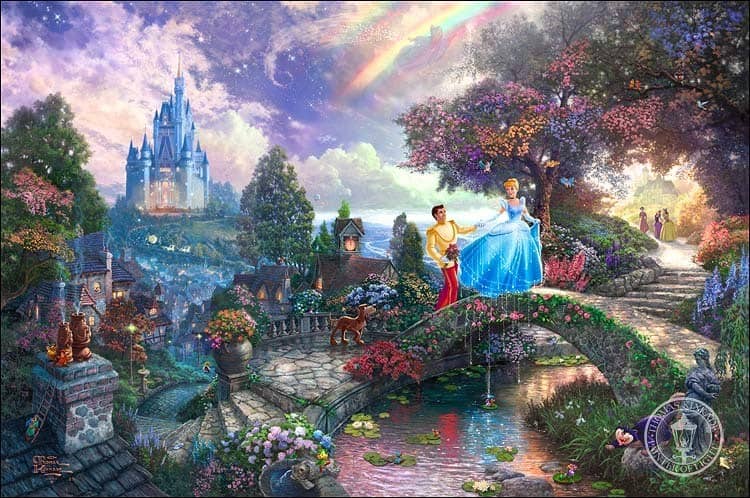
Cinderella is, of course, another example. In the Grimm version the Cinderella story both Cinderella and her step-sister’s were physically attractive. The story was essentially about the difference between the beautiful, Cinderella, and the merely pretty, her step-sisters. Disney complicated the story by making the step-sister’s ugly (which I will postulate as the ontological opposite of pretty). The story no longer confronts merely the truth about the inner character of the individuals, their true beauty. It falsely connects the depth of beauty inextricably with mere prettiness.
In my construction, the pretty can be beautiful. But, it can also be something less. That “something” is difficult to articulate. The traditional Thomistic (a School of Philosophy rooting in the writings of Thomas Aquinas) definition of beauty is “That which when seen pleases.” I tend to agree with this definition but I also think that it can confuse the issue. When I see a Kinkade painting it does not please me. But, I must acknowledge a certain amount of sensual delight. I think the difference may be found there. Part of the idea of beauty being pleasing has to do with intellect. Maybe the pretty is purely sensual or sentimental and does not engage the intellect. In that case a kitsch painting of flowers may be pretty but not beautiful as is a real flower or a Dutch still life. Maybe pornography or erotica (I’m told that porn implies violence while erotica does not) can be pretty but not beautiful as it provides a sensual delight but lacks that “something more” be it a moral aspect or an intellectual one. The stereotypical cheerleader or sports jock may be pretty but not beautiful for much the same reason.
Ugly
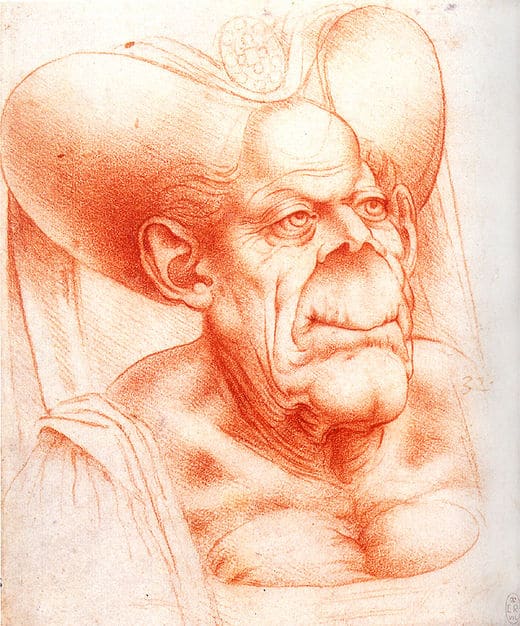
Some philosophers conceive ugly as the opposite of beauty. In my system, ugly would actually be the opposite of pretty. Ugly, barring consideration of fetishes, would not provide the sensual delight that we find in the pretty. But, it may still engender the intellectual delight associated with the beautiful. The painting, Human Drapery 3 by Jordan Wade (above), achieves that. The intellectual delight may come from something as simple as admiring the facility with which Wade paints. Similarly, Leonardo Da Vinci’s famous Grotesques illustrate how this tension was being explored during the Renaissance.
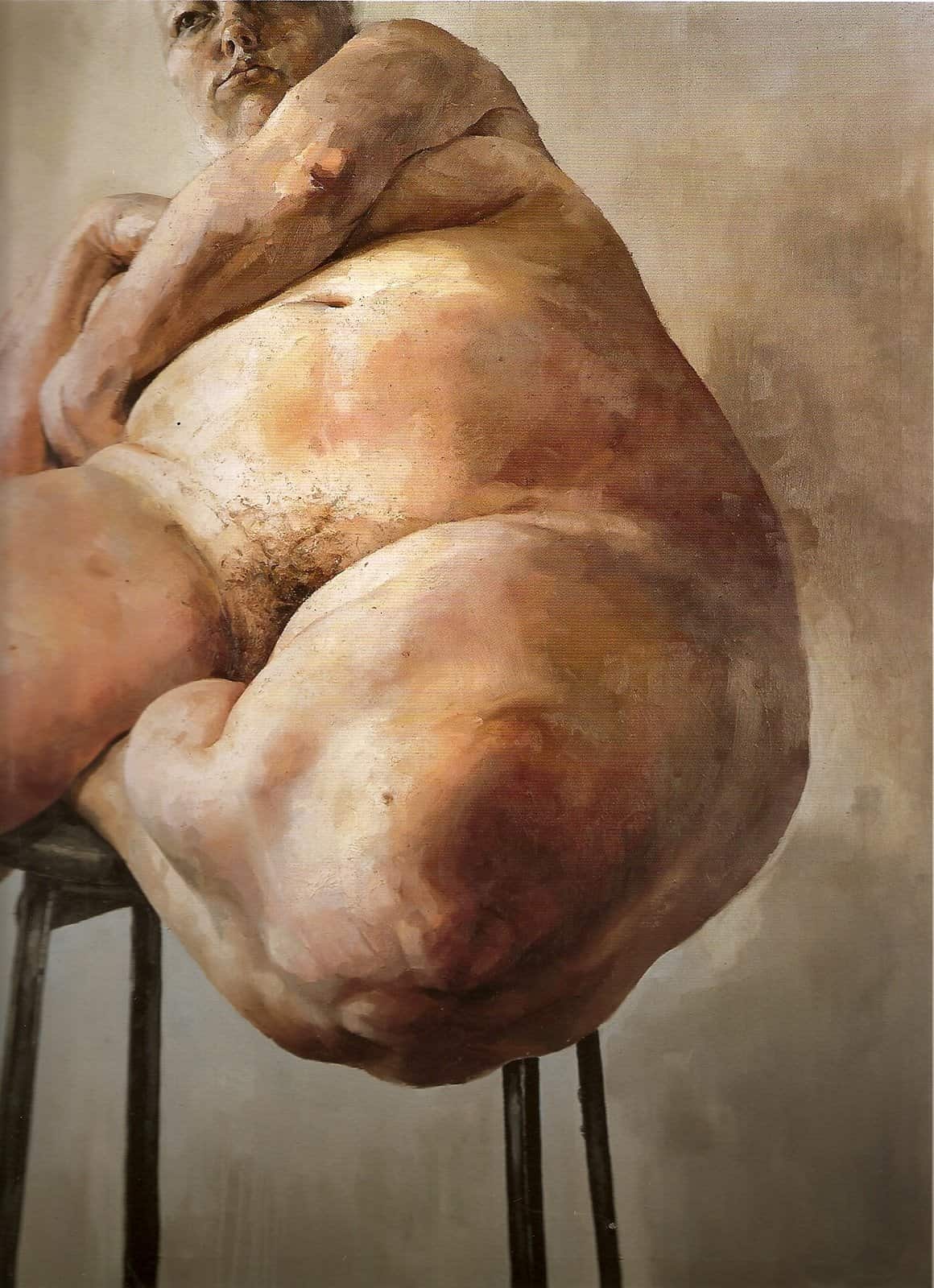
A contemporary example of an artist exploring the connection between the beautiful and the ugly could be Jenny Saville. While it can be hard, at times, to see in a reproduction Saville is a master painter. The way she handles the paint and the beauty of her painting surface are almost unparalleled in the contemporary art scene. Yet, the subject matter is difficult. Saville intentionally paints subjects which we typically do not find pretty- obese women, deformed children, and transgender individuals. Her work creates discomfort. She complicates the issue by dealing with subject matter that some would find morally objectionable, transgenders, while treating them with dignity that some would find completely moral.
In a formalist language, Ross Neher similarly plays with the relationship of beauty and ugly. His Sforza series is characterized by a true formalist beauty. However, some works use color in a way that literally causes physical discomfort, at least when seen in person. This sort of approach clearly does not employ the sort of sensual delight that one would associate with the pretty but at the same time has an unmitigated formal beauty. Works like the ones discussed here would, for me, fall in the overlap between beauty and ugly.
Sublime
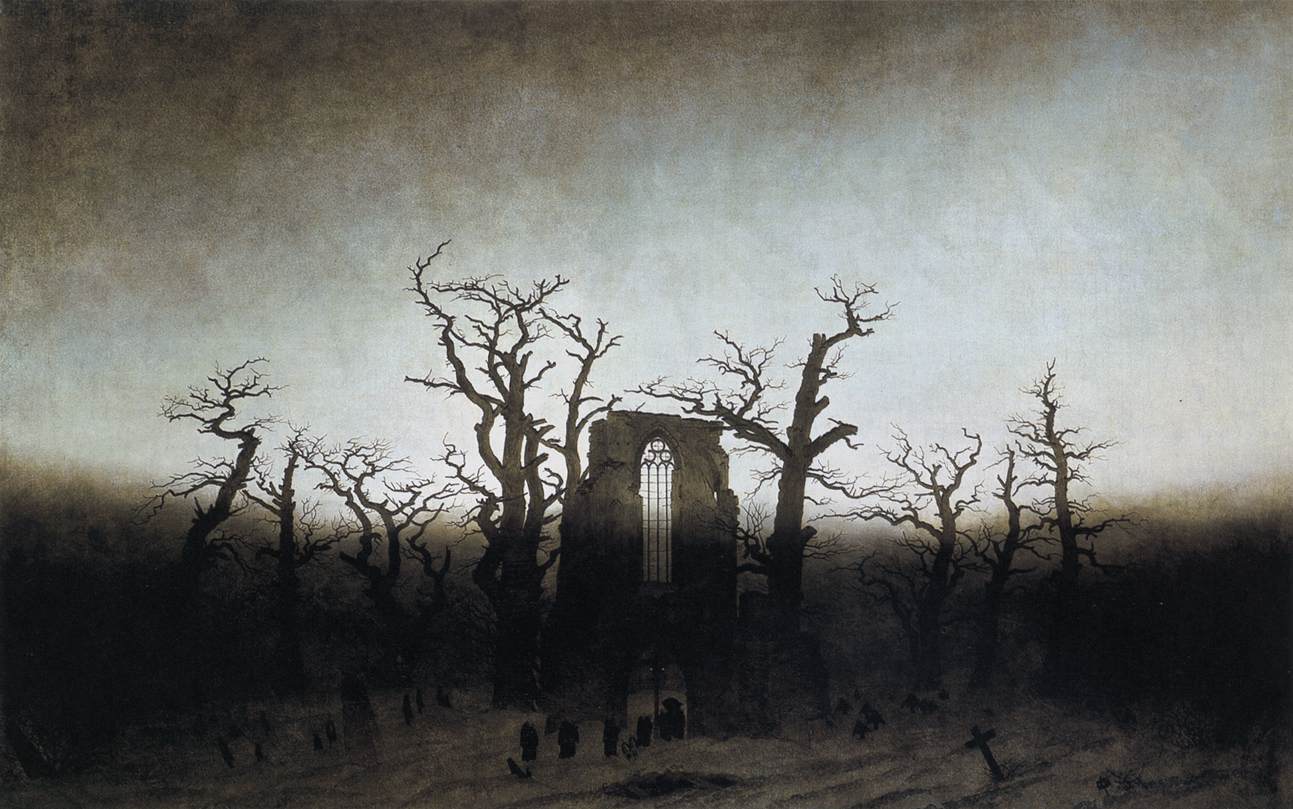
My interest in the relationship between beauty and the sublime is what brought me to this topic. This semester I am taking a Philosophical Aesthetics class which focuses mostly on the issue of beauty and a course called Post-Coloniality, Modern Art, & The Sublime. The thing that struck me the very first week of the semester is how sublime and beauty are put in opposition to each other. Yet, there are many things which we would call sublime that I would also consider beautiful- the ocean, the mountains, and storms just to mention a few. The sublime is tied historically to ideas of awe, fear, danger, magnitude, infinity, even the infinitesimally small. I agree with all that. But, I see no reason to make a stark distinction between beauty and the sublime.
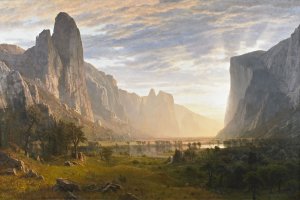
Caspar David Friedrich may be the classic example of a sublime painter but, to me, images such as this one are also hauntingly beautiful. Albert Bierstadt is the great painter of the American West. For thinkers such as Edmund Burke or Immanuel Kant, this painting of Yosemite Valley would qualify as sublime but not beautiful. That is unfathomable to me.
I do not question that either of these paintings are sublime. But, they are also beautiful.
The characteristics of sublime all seem to have to do with our limits as humans. The immense and infinite remind us of our own limitations as does the dark, the unknowable, the frightful. For me, again as a theist, there seems to be an undeniable connection between the sublime and the divine. The sublime reminds us of our limitations and through that act reminds us that there is something beyond ourselves.
To Sum it Up
This is already longer than I planned. So, I will stop there for now. Even as I have written this I see problems with it. But, I feel good about my general intuition. So please, problematize my thoughts for me. Where do they fail? Where do they ring true? How does your own intuition align or differ from what I have presented here.


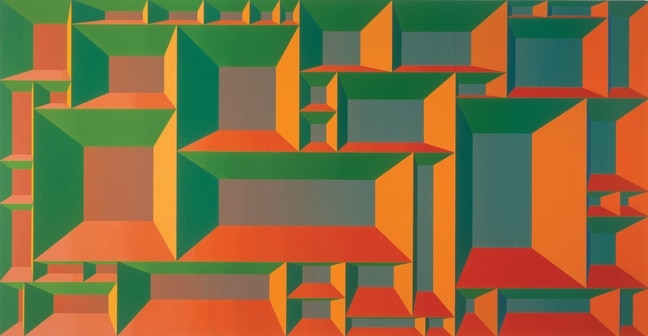

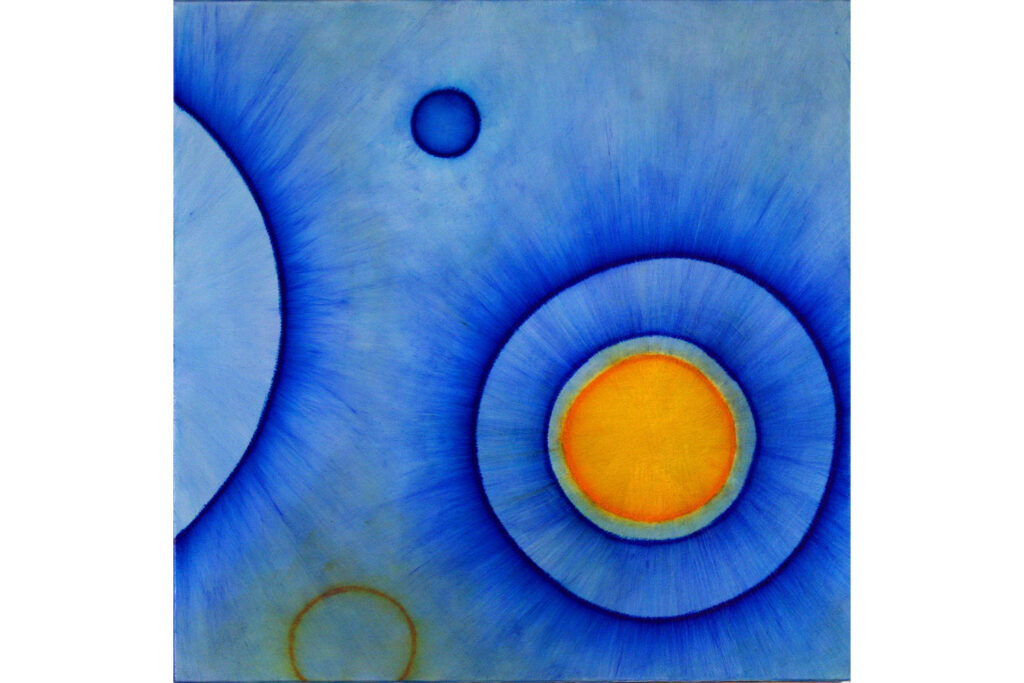


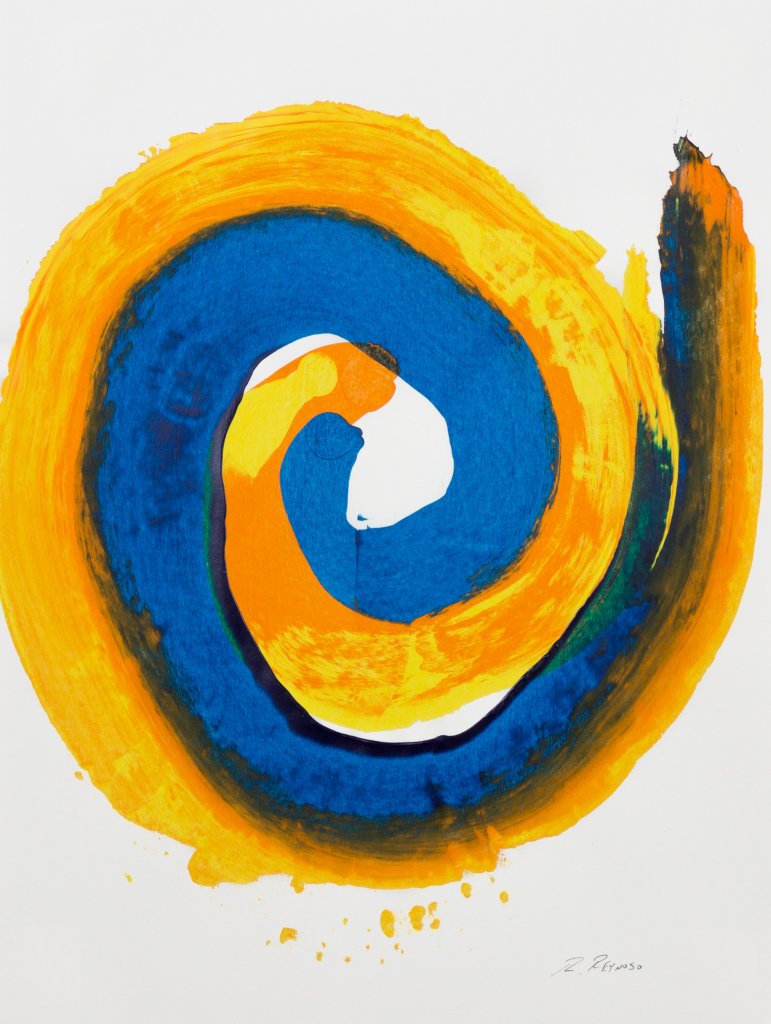

What is so difficult in defining terms is that language is ever-changing within its cultural context. That being said, from my cultural context, I think that “pretty” is within the eye of the beholder but beauty is deemed by God as the Beholder. Ugly is its opposite; that which is absent of its context given by God. Sublime is the stark contrast between the two. Just my thoughts.
In the novel _Extremely Loud and Incredibly Close_, the observant main character says, “Nothing beautiful is true.” I disagree, though, and your distinction between “pretty” and “beautiful” illustrate why: things that are beautiful illustrate hard truths, and there is often a broken beauty in them, a beauty born of scars, like a fallen oak after a storm or a ballerina’s feet, or the face of an old miner. There is a beauty in an Egon Schiele painting that simply does not exist in a Kinkaid.
The sublime, for me, is much more…infinite. Grand, even, although that word does not describe what I mean accurately.
Thought-provoking post. I enjoyed reading it.